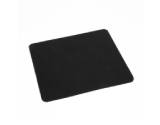+1 929 346 6766 info@tri-cpromo.com
Bring you wonderful choices, like primary colors do
A5 notebook wholesaler to share with you: In the decades of computer development, mice existed in various forms, and most of the time, they appeared in pairs with mouse pads. But modern optical mice can work on almost any surface, so can mouse pads work? That's right, mouse pads seem technically unnecessary now, but there are some obvious benefits to using a mouse pad.
★ The evolution of mouse pads
◇ mechanical mouse
After prolonged use, the ball brings dirt into the mouse
Earlier mechanical mice had a rolling ball inside, moving the mouse to drive the rolling ball, transmitting motion to the sensor. Although mechanical mice are highly adaptable to object surfaces, mouse pads still play some very important roles: they not only provide a smooth and predictable tracking area, but also help the ball reduce dirt, skin oil, and other stickiness Of things.
◇ Early optical mouse
Back in 1980, two independent inventors first demonstrated an optical mouse, which came in two different varieties:
The first is an optical mouse invented by Steve Kirsch and Mouse Systems.
The other is a Xerox 8010 Star optical mouse invented by Xerox's Richard F. Lyon.
The first-generation optical mouse canceled the ball, but its basic principle is similar to that of a mechanical mouse, except that the optical coding disc was moved to the mouse pad, so this generation of products relies on a special mouse pad.
◇ Modern Optical Mouse
The first optical mouse to be successfully commercialized was Microsoft's IntelliEye IntelliMouse and IntelliMouse Explorer, which were released in 1999.
Except for shaggy carpets or some rough surfaces, reflective or completely flat surfaces (such as glass, mirrors or highly polished marble), repetitive patterns (such as magazine pictures), they can work on almost any surface.
This is a huge improvement. These two mice laid the foundation for modern optical mice. They no longer need special mouse pads like early optical mice.
Later, mice with new technologies (laser, blue shadow, unbounded, and pin light) could work on more surfaces. At this time, the role of the mouse pad as an auxiliary mouse motion sensing is further weakened.

Mouse Pad
◇ Status
Perhaps the jitter problem of the laser mouse has prevented it from becoming the mainstream. The three major mouse sensing patented technologies (blue shadow, unbounded and needle light) are only applied to specific brands of mice, so most of the current market is still optical mouse.
 Previous: Do You Really Need a Mouse Pad?
Previous: Do You Really Need a Mouse Pad?